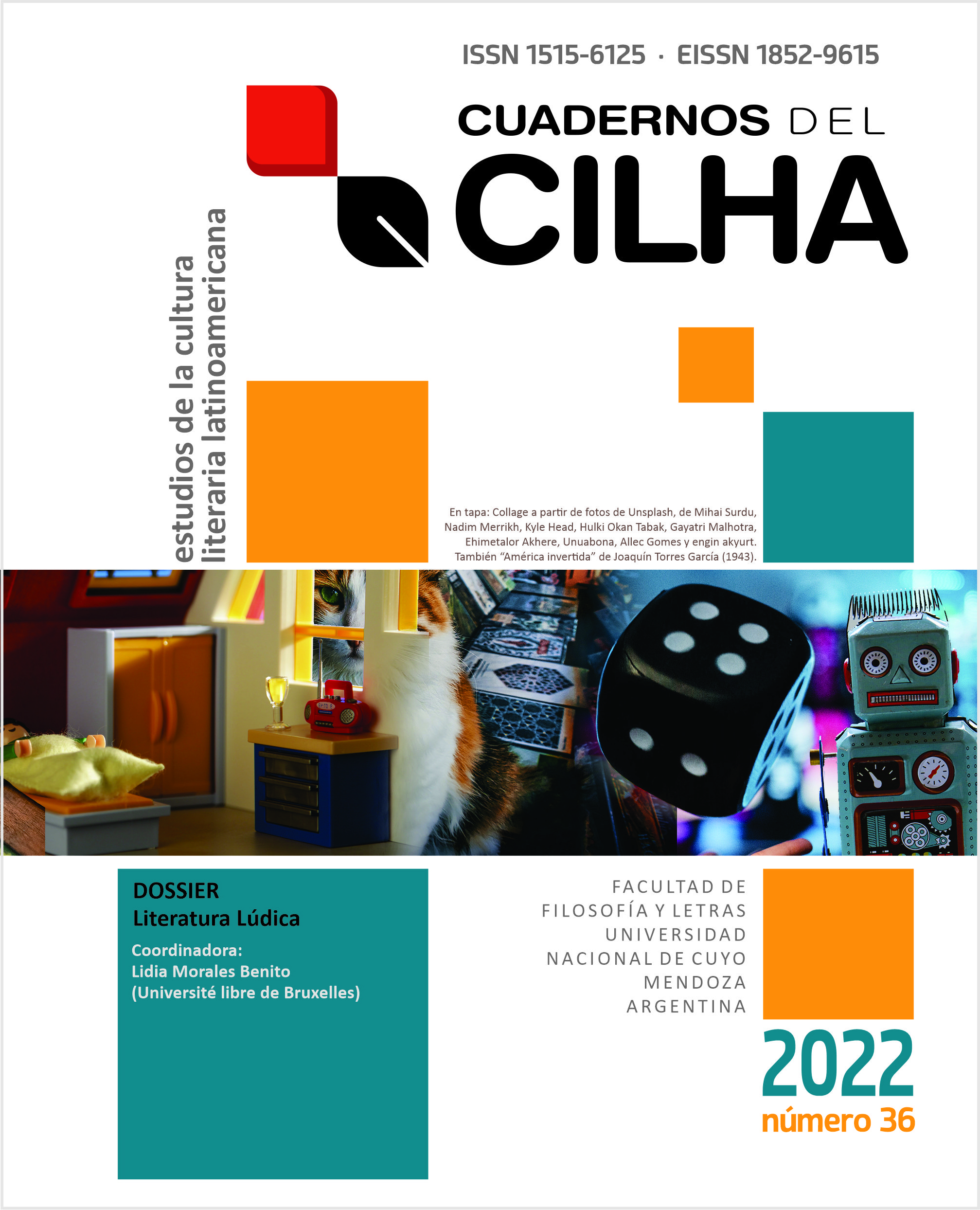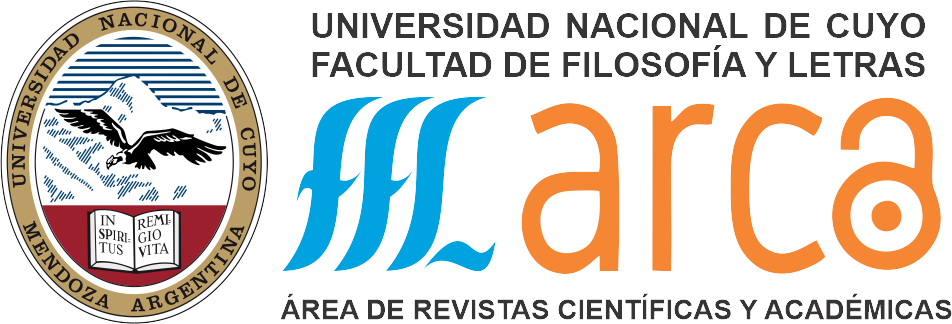Luisa Valenzuela: tales that instruct to play villains
DOI:
https://doi.org/10.48162/rev.34.039Keywords:
Valenzuela, Play, Language, Humor, Discursive techniquesAbstract
The Argentine writer Luisa Valenzuela gathered in the book Juego de villanos a large number of her shorter stories. By selecting texts from books already published and adding some new ones, the book, published in 2008, allows those stories and micro-stories to be read in a new context. The result is a proposal that puts humor in the foreground and turns the game, present in the title of the book, on the way to approach these texts. Starting from the theory about the nature of the game as an essential component of our social being and its inescapable relationship with language, we propose an approach to the techniques used by the author to compose these various texts, see how she plays and how she invites the reader to participate or catch you without warning. Through the analysis of several of the micro-stories, a way is offered to get closer to the rest of the texts and to establish the link between play, humor and commitment with a pressing reality that marginalizes, represses and destroys and in which laughter becomes a transformer element.
References
Aranzueque, G. (2012). Cuerpo y texto. Universidad Nacional de Colombia.
Bianchi, S. (2017). Zoología y lenguaje: micropoética a lo Valenzuela. El vértigo de la escritura. En I. Chikiar Bauer (comp.), Jornadas Luisa Valenzuela (págs. 87-100). Edición digital https://docplayer.es/54734424-El-vertigo-de-la-escritura.html
Caillois, R. (1986). Los juegos y los hombres. La máscara y el vértigo. Fondo de Cultura Económica.
Carreras, C. (2017). Del homo ludens a la gamificación. Quaderns de Filosofía, IV(1), 107-118. https://ojs.uv.es/index.php/qfilosofia/article/view/9461/9472
Cortázar, J. (1991). Rayuela (J. Ortega y S. Yurkievich, eds.). Archivos.
Díaz, G. (1996). Introducción. En G. Díaz y M. I. Lagos (eds.), La palabra en vilo: narrativa de Luisa Valenzuela (págs. 9-12) Editorial Cuatro Propio.
Glantz, M. (1996). Reflexiones sobre Simetrías. En En G. Díaz y M. I. Lagos (eds.), La palabra en vilo: narrativa de Luisa Valenzuela (págs. 247-252) Editorial Cuatro Propio.
Grijalva Monteverde, D. (2013). El erotismo lúdico: fiesta del lenguaje y la imaginación. En P. Popovic Karic, F. Chávez Pérez (coords.), Luisa Valenzuela. Perspectivas críticas. Ensayos inéditos (págs. 65-103) Miguel Ángel Porrúa. https://www.cervantesvirtual.com/obra-visor/el-erotismo-ludico-fiesta-del-lenguaje-y-la-imaginacion-933401
/html/474df660-4334-405c-8550-62cae27631f7_5.html#I_0_
Guillén, J.C. (14 de enero, 2015). El juego, un mecanismo natural imprescindible para el aprendizaje. Escuela con cerebro. https://escuelaconcerebro.wordpress.com/2015/01/14/el-juego-un-mecanismo-natural-imprescindible-para-el-aprendizaje/
Huizinga, J. (1994). Homo Ludens. Alianza.
Johnson, M. (1991). El cuerpo en la mente. Editorial Debate.
Jones, S. (1995). The Fairy Tales. The Magic Mirror of Imagination. Twayne Publishers.
López de Martínez, A. (1999). Feminismo y literatura en Latinoamérica: un balance histórico. En R. Forgues (comp.), Mujer, creación y problemas de identidad en América Latina (págs. 267-278) Universidad de los Andes.
Martínez, N. Z. (1994). El silencio que habla: aproximación a la obra de Luisa Valenzuela. Ediciones Corregidor.
Morales Benito, L. (2012). Las reglas del juego: teoría y práctica del juego en literatura. Les Ateliers du SAL, 1-2, 271-281.
Morales Benito, L. (2021). El arte del funámbulo. Universidad Iberoamericana Puebla.
Muñoz, W.O. (1996). Luisa Valenzuela y la subversión normativa en los cuentos de hadas: “Si esto es vida, yo soy Caperucita Roja”. En G. Díaz y M.I. Lagos (eds.), La palabra en vilo: narrativa de Luisa Valenzuela (págs. 221-246) Editorial Cuatro Propio.
Nancy, J.-L. (2003). Corpus. Arena Libros
Nietzsche, F. (1980). Sobre el porvenir de nuestras escuelas (C. Manzano trad.). Tusquets.
Noguerol, F. (2006). Luisa Valenzuela: relatos integrados en el infierno de la escritura. En P. Brescia y E. Romano (coords.). El ojo en el caleidoscopio (págs. 389-412) Universidad Nacional Autónoma de México.
Noguerol, F. (2008). Prólogo: Luisa Valenzuela, baile de máscaras. En L. Valenzuela, Generosos inconvenientes (págs. 7-22) Menoscuarto Ediciones.
Noguerol, F. (2012). Luisa Valenzuela: maestra de intensidades. En A. Calvo y J. de Navascués (eds.), Las fronteras del microrrelato. Teoría y crítica del microrrelato español e hispanoamericano (págs. 221-234) Iberoamericana.
Reyes, A. (2009). La experiencia literaria y otros ensayos. Fundación Banco Santander. Disponible en: http://es.scribd.com/doc/49230482/LA-EXPERIENCIA-LITERARIA
Rodríguez, S. (1986). Hallazgo de las piedras [canción]. En Causas y azares. Sonoland.
Searle, John (1994). Actos de habla. Ensayo de filosofía del lenguaje. Planeta de Agostini.
Stendhal (2018). El rojo y el negro. (P. Ruiz Ortega trad.). Akal. Disponible en Digitalia. https://www.digitaliapublishing.com/a/55217
Valenzuela, L. (2008). Juego de Villanos. Thule Ediciones.
Valenzuela, L. (2009). Casa tomada: escritoras y escritura. En M. Á. Encinar y C. Valcárcel (coords.), Escritoras y compromiso.
Literatura española e hispanoamericana de los siglos XX y XXI (págs. 123-136) Visor.
Valenzuela, L. (2018). Biografía dialogada con Gwendolyn Díaz Ridgeway. Cervantes Virtual. http://www.cervantesvirtual.com/nd/ark:/59851/bmc0933884
Wilson, R. R. (1990). In Palamedes’ Shadow. Explorations in Play, Game, & Narrative Theory. Northeastern University Press.
Winnicott, D. (1982). Realidad y juego. (F. Mazía, trad.). Gedisa.
Downloads
Published
How to Cite
Issue
Section
License
Copyright (c) 2022 Raquel Arias Careaga

This work is licensed under a Creative Commons Attribution-NonCommercial 4.0 International License.





















